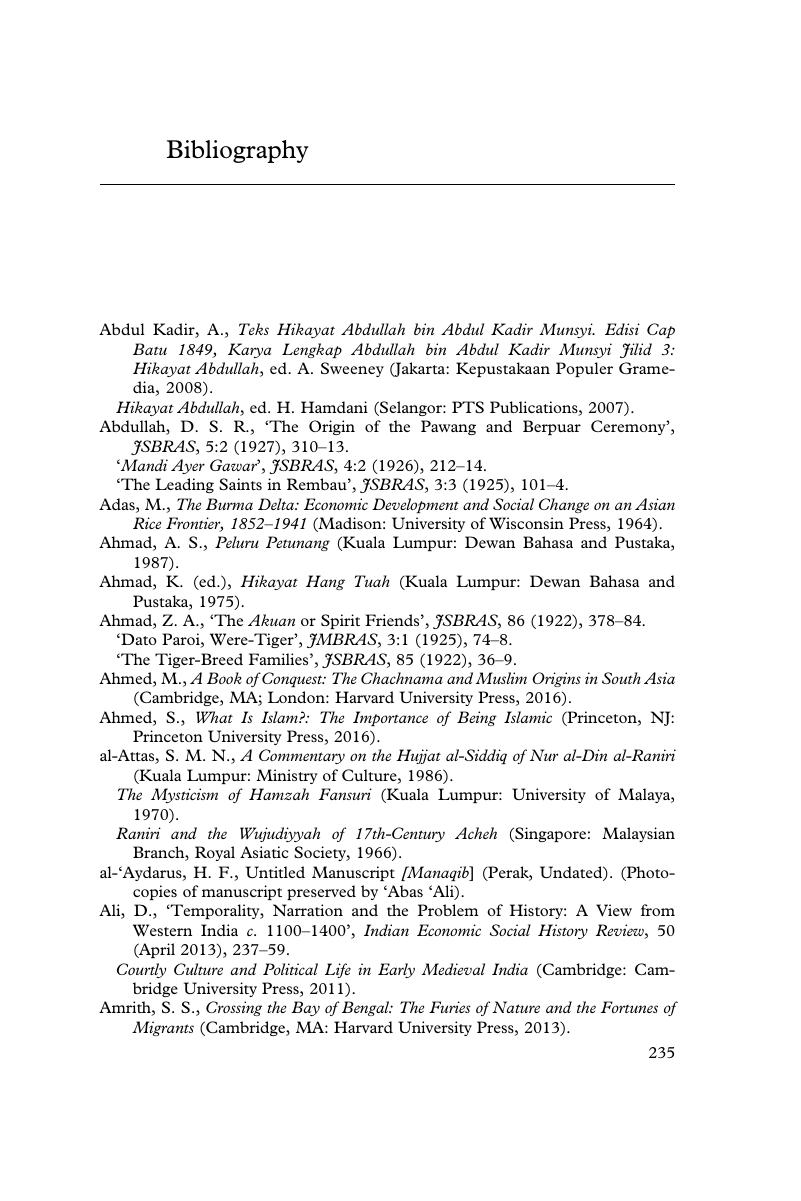Book contents
- Miracles and Material Life
- Asian Connections
- Miracles and Material Life
- Copyright page
- Dedication
- Contents
- Maps and Figures
- Prologue
- Acknowledgements
- Notes on Transliteration
- Abbreviations
- An Introduction
- 1 Compendia of Forest Patois and Agrarian ‘Ilmu
- 2 Pawangs and Munshis in Muhammad’s Ricefields
- 3 The Pawang’s ‘Wonderful Nose’ for Ore
- 4 An ‘Ilmu of Violence
- 5 Gun Gurus and Sufi Shooters
- Conclusion
- Glossary
- Bibliography
- Index
- Asian Connections
- References
Bibliography
Published online by Cambridge University Press: 26 June 2020
- Miracles and Material Life
- Asian Connections
- Miracles and Material Life
- Copyright page
- Dedication
- Contents
- Maps and Figures
- Prologue
- Acknowledgements
- Notes on Transliteration
- Abbreviations
- An Introduction
- 1 Compendia of Forest Patois and Agrarian ‘Ilmu
- 2 Pawangs and Munshis in Muhammad’s Ricefields
- 3 The Pawang’s ‘Wonderful Nose’ for Ore
- 4 An ‘Ilmu of Violence
- 5 Gun Gurus and Sufi Shooters
- Conclusion
- Glossary
- Bibliography
- Index
- Asian Connections
- References
Summary

- Type
- Chapter
- Information
- Miracles and Material LifeRice, Ore, Traps and Guns in Islamic Malaya, pp. 235 - 251Publisher: Cambridge University PressPrint publication year: 2020



